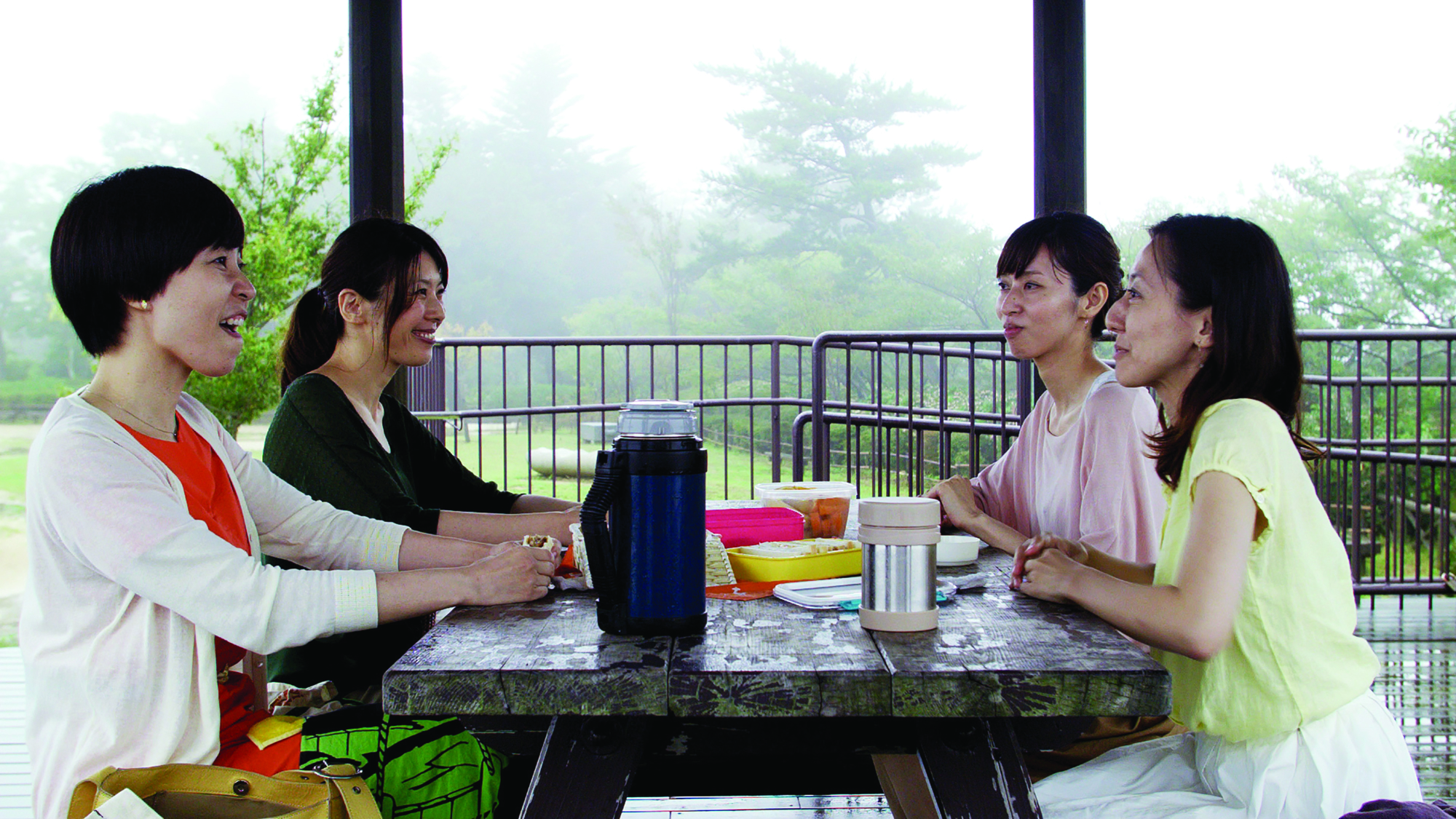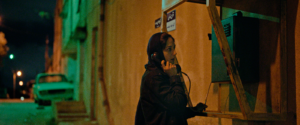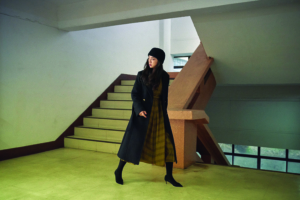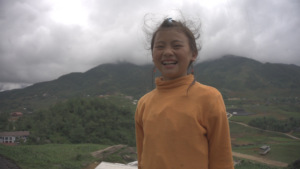The title of Happy Hour (Ryūsuke Hamaguchi, 2015) is, quite possibly, a joke. Sure, there’s a scene in which the film’s four female friends – nurse Akari (Sachie Tanaka), housewife Sakurako (Hazuki Kikuchi), art-space coordinator Fumi (Maiko Mihara) and soon-to-be-divorcee Jun (Rira Kawamura) – head out, among a larger group, for some early evening drinks in the coastal city of Kobe. But it takes a particularly wry director to title a movie ‘Happy Hour’ – borrowing the English phrase rather than employing a Japanese one – when the movie is 317 minutes long.
At such a vast length, Hamaguchi’s feature is an odd bird. There’s a certain festival programming strain – and a hardcore-cinephile audience – for epic films, but Hamaguchi bears no comparison to endurance-cinema titans like Béla Tarr and Lav Diaz. Rather than a work of high-art formalism, Happy Hour is, instead, a light, warm, affectionate drama whose vast duration charts the evolving relationships of four thirtysomething women. While the pace is leisurely, the plot developments are soap-operatic stand-bys: marital strife, divorce, adultery, abortion, a sudden vanishing. As such, the film begs comparison to artful ‘auteur’ television, with its lengthy running time roughly the equivalent of six bingewatched episodes. But Happy Hour hasn’t been structured episodically, nor are there obvious ways to divide the film. It’s filled with a host of lengthy set pieces that run close to real time, but then, in between those, abrupt edits can hurry along whole narratives, leap forward in time or cut out a character, never to be seen again. It demands to be experienced in a single sitting, even if the size and scope of the canvas have little to do with the film’s ambition.
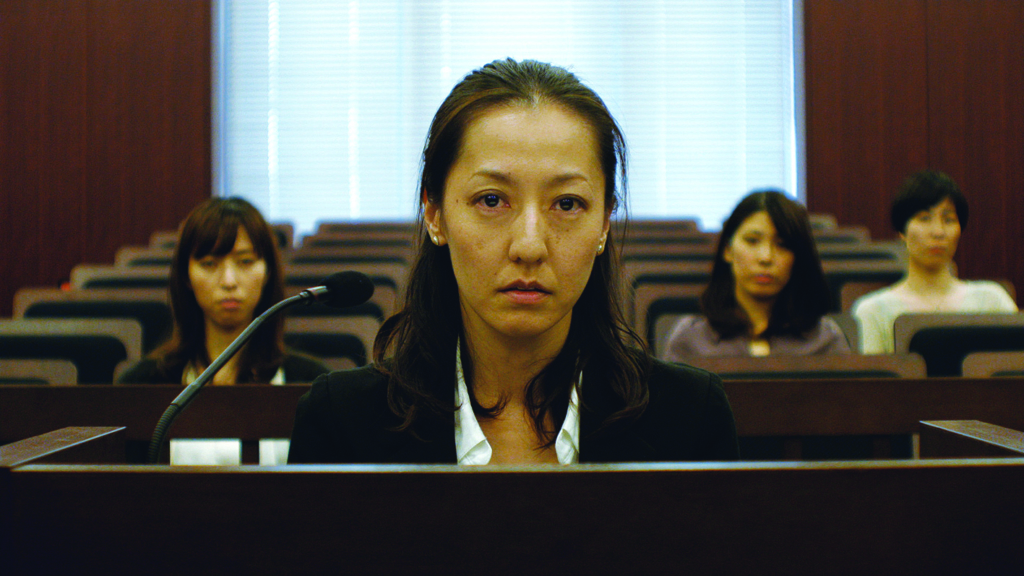
While Happy Hour takes its name from the common English-language phrase, its theme can be condensed to another English word, used often in the film: communication. The story may be a study of adult female friendship and the trials (sometimes literal) that Japanese women endure, but, more than anything, it’s about Japanese social mores and manners: the things that must be said, the things that cannot be said, and the conversations that can flower in such a formal society. It’s five hours of guarded exchanges, endless deflecting, respectful bows, humbling apologies – a film filled with the displays of deference that are ubiquitous and conspicuous in Japanese society. At the hospital, Akari is in charge of a trainee nurse, Yuzuki (Ayaka Shibutani), who is constantly apologising, then apologising for apologising. Her endless self-effacement is couched in notions of seniority, but eventually becomes a workplace issue: in matters of healthcare, overt politeness can be dangerous. Sakurako, too, is dealing with the social hierarchies of seniority: her mother-in-law, having moved into her home, now needs to be consulted on issues regarding her sad-sack salaryman husband and slacker teenage son. And Fumi’s marriage is filled with cavernous silences: her milquetoast husband, Takuya (Hiroyuki Miura), is obsessed with politeness, especially in regard to the author, Ms Nose (Reina Shiihashi), for whom he serves as editor. While Fumi quietly fumes over his attentions to – and affection for – his young, sweet protégé, their relationship continues like a charade, routines played out while the elephant in the room remains never addressed.
It’s about Japanese social mores and manners: the things that must be said, the things that cannot be said, and the conversations that can flower in such a formal society. It’s five hours of guarded exchanges, endless deflecting, respectful bows, humbling apologies.
‘Communication’ is spoken of, at length, in the film’s defining scene: an extended, improvised sequence set at an afternoon group workshop called ‘Listening to the Centroid’. It brings up many of the film’s themes: interpersonal communication, group dynamics, body language. For Hamaguchi, the body is not just a vessel, but a text unto itself;[1]Ryūsuke Hamaguchi, in Miyuki Watanabe, ‘Happy Hour: Dir. Ryūsuke Hamaguchi’, SBS, 4 August 2016, <http://www.sbs.com.au/yourlanguage/japanese/en/content/happy-hour-dir-ryusuke-hamaguchi>, accessed 21 February 2017. listening to your body is an important part of wellbeing, listening to the bodies of others, a form of implicit conversation. These scenes of group participation – when combined with the unwieldy running time – have garnered Happy Hour constant comparisons to Jacques Rivette’s infamous Out 1 (1971), a thirteen-hour Nouvelle Vague epic filled with endless scenes of acting troupes in rehearsal.[2]See, for example, Carson Lund, ‘Happy Hour’, Slant, 12 March 2016, <http://www.slantmagazine.com/film/review/happy-hour-2015>; Michael Sicinski, ‘Happy Hour (Hamaguchi Ryusuke, Japan)’, Cinema Scope, issue 65, Winter 2015, <http://cinema-scope.com/spotlight/happy-hour-hamaguchi-ryusuke-japan/>; Lawrence Garcia, ‘In Praise of Duration’, MUBI, 14 November 2016, <https://mubi.com/notebook/posts/in-praise-of-duration>; Vadim Rizov, ‘Happy Hour, the Best 317 Minutes of New Directors/New Films 2016’, Filmmaker Magazine, 25 March 2016, <http://filmmakermagazine.com/97860-happy-hour-the-best-317-minutes-of-new-directorsnew-films-2016/>; Dan Sullivan, ‘Review: Happy Hour’, Film Comment, September/October 2016, <http://www.filmcomment.com/article/review-happy-hour-ryusuke-hamaguchi/>; and Jonathan Romney, ‘Film of the Week: Happy Hour’, Film Comment, 26 August 2016, <http://www.filmcomment.com/blog/film-week-happy-hour/>, all accessed 21 February 2017. But Hamaguchi was inspired by his own attendance at a group improv-acting workshop over a six-month period in 2013–2014, at a Kobe design centre where he was artist-in-residence. There, the group studied human behaviour so much – interviewing people and listening to speakers as groundwork for acting – that it turned the participants into listeners. ‘We were supposed to shoot a film when the workshop ended,’ the director says, ‘but what we were doing were lessons to be listeners, not lessons for acting.’[3]Ryūsuke Hamaguchi, quoted in Taiyo Okamoto, ‘In Search of the Centroid’, Cool, 1 May 2016, <http://www.cool-ny.com/en/archives/2361>, accessed 21 February 2017.
Before this, Hamaguchi had just come out of an intense stint of listening – his documentary The Sound of Waves (2012) found him touring the Tōhoku coast, chronicling stories told by the survivors of the 2011 earthquake and tsunami. His experiences in the workshop then cultivated thematic ideas around listening, communication and the potential for miscommunication; inspired to bring them to the screen, he set out to make Happy Hour. Just as participants in the real-life workshop needed no acting experience, the cast of the film is filled with non-professionals. The quartet of lead actors may’ve been co-winners of the Best Actress award at the 2015 Locarno International Film Festival, but none of them had ever acted before.[4]‘Four Japanese Win Best Actress Award at Locarno Film Festival’, The Japan Times, 16 August 2015, <http://www.japantimes.co.jp/culture/2015/08/16/entertainment-news/four-japanese-win-best-actress-award-locarno-film-festival/>, accessed 21 February 2017. Adding to the resonance between art and life, Hamaguchi gathered his ensemble for six months’ worth of rehearsals – twenty-three of them[5]NEOPA Inc., Happy Hour press kit, 2015, p. 7. – before he started filming, the director, cast and co-writers building characters from the ground up, in a collaborative setting, and then putting them into drama.
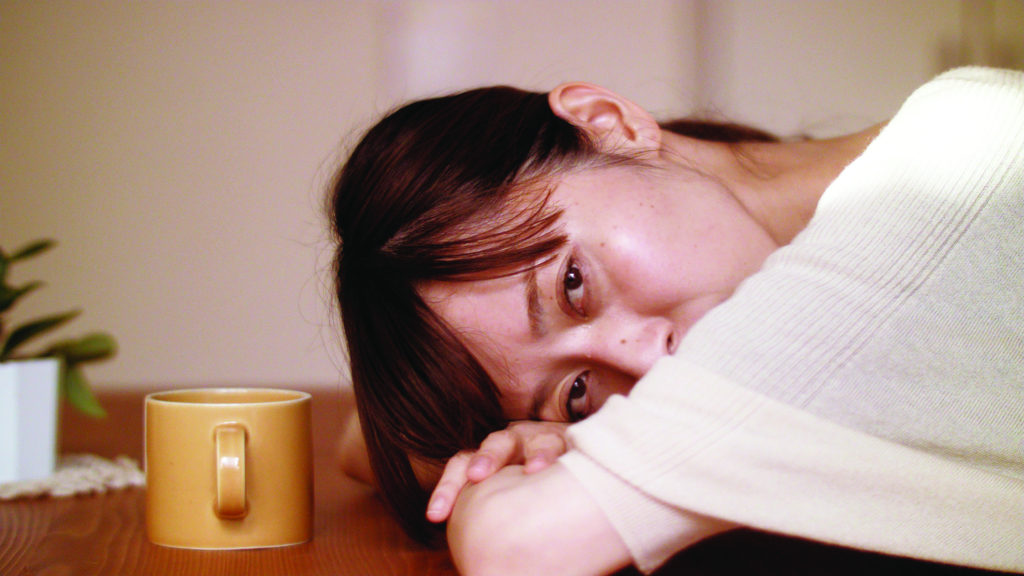
And so, in turn, Happy Hour boasts its own workshop, hosted by conceptual artist Ukai (Shuhei Shibata). Originally from Kobe, Ukai went to Tōhoku to volunteer in the wake of the quake, and took to precariously balancing debris on the beach, making for a form of tenuous, ephemeral sculpture. Balancing debris is, he thinks, like balancing yourself, and so his workshop is filled with ‘unconventional ways of communication’ – foggy notions about seeking balance, finding one’s ‘centre’, listening to the body. It’s staged in the art space run by Fumi, and, likely due to the vagueness of the concept – though she respectfully apologises to Ukai for the flyers being printed too late, assuming blame – attendance is sparse. So Fumi invites her friends, whom we’ve met in the film’s opening sequence, where the quartet ride a funicular railway up Mount Rokkō for a scenic picnic. There, Fumi mentions the workshop, and the quartet plan another trip away, consulting their schedules. Akari is wry (‘The future for 37-year-old women is bright!’ she says, with due irony) and independent, but Sakurako must ask permission from her husband for days out with the girls.
On the way to the workshop, Jun tells Sakurako – the pair, old schoolfriends – about her ongoing divorce proceedings, something that she has kept from Fumi and Akari, whom they only befriended as adults. Once our pals have arrived at the workshop, they’re asked to engage in group bonding activities: using the mutual force of backs pressed against backs to rise to their feet; trying to ‘centre’ themselves in line with a partner (during which Hamaguchi introduces his recurring device of having characters stare directly into the camera); literally listening to the bodies of others, ears pressed on stomachs; and, in a form of minor ESP, trying to communicate a thought in a fashion both psychic and physical, via foreheads pressed together. The intimacy of all this touching – something unusual in Japanese society – is made clear when the geeky Kazama (Hajime Sakasho), having pressed heads with Sakurako, asks her out, unaware (or unconcerned) that she’s married. At the end of the workshop, Ukai asks for feedback, and it’s uniformly polite: Jun glad to just be able to touch others; Akari relating it to how, as nurse, she deals with her patients’ bodies; Sakurako pleased with the exercises in listening and communication (‘It’s rare when others are willing to listen to you in everyday life’). The only dissenting voice – she describes proceedings as vague, poorly explained, inscrutable, lacking a point – comes from Hinako (Hiromi Demura), who, we later learn, is Ukai’s sister. Once this relationship is revealed, she’ll call him ‘empty inside’, and we soon discover Ukai’s a pretty salacious guru. His initial plan was to have the strangers among the group not just touch, but kiss, and, as the film progresses, he reveals himself as somewhat of a sex pest, propositioning three of the friends and eventually taking Akari to a dark, seedy nightclub, where he plays out power games.
Hamaguchi is interested in studying group dynamics – the apologetic formalism that dictates early exchanges, the easier rapport among the friends (and relatives) in the group, and the way alcohol can loosen things up.
The workshop sequence lasts for thirty-one minutes, but, amazingly, it leads straight into another extended single scene. In something of a post-Centroid afterparty, nine people gather around a table in a bar, for a conversation that lasts another twenty-five minutes on screen. There’s our four friends, Kazama, Ukai and Hinako, Yoshie (an old friend of the siblings who’s bashful and shy, played by Tsugumi Kugai) and Kawano (who runs the art space with Fumi, played by Yuichiro Ito). Again, Hamaguchi is interested in studying group dynamics – the apologetic formalism that dictates early exchanges, the easier rapport among the friends (and relatives) in the group, and the way alcohol can loosen things up. When Akari rebuffs Ukai’s attempts at polite conversation – ‘I don’t like lip service; say it only if you mean it!’ – it leads them into a bout of truth-telling. When Ukai starts looking at everyone’s wedding rings, we learn that Akari and Kazama are both divorcees, and the pair bond through shared experiences: having been cheated on, going through mediation, court hearings. While Akari wishes her husband had never confessed about his infidelity (‘Be a man and keep it a secret ’til he dies!’), she’s – a little hypocritically – outraged when Jun chooses this moment, in this company, to disclose that she, too, is getting divorced, after having an affair with a younger man (Akari later says, ‘I hate lies – I can’t be friends if you lie,’ and, ‘What’s a relationship built on lies?’). Hamaguchi, again, has his characters staring into the lens, facing us – though, this time, it’s less about group dynamics and more about situating us within the confrontation between Akari and Jun, viewing each from the other’s perspective.
He shoots nearly an entire scene, later, in this fashion. At a scant seven minutes, a game of rīchi mahjong in a hotel room isn’t as epic as some of the other set pieces, but, in many ways, it defines the film. The quartet have gone off on a trip to nearby Arima Hot Springs, on the holiday we’d heard them planning in the opening scene; after a long day, they’re all dressed in kimonos, seated on the tatami around a low table. As Hamaguchi’s camera goes from face to face, what results is a true heart-to-heart, in which formal manners melt away for pure confession, a true display of friendship. After the group see Takuya and Ms Nose – also staying in the tourist town – together, they become concerned with Fumi’s wellbeing and end up discussing her marriage; Akari, as always, agitates for more truth, wanting to crack the couple’s facade to reveal the hollowness beneath. At the onsen, each ends up speaking about her essential qualities, and, after Sakurako says it’s like ‘meeting [Jun] for the first time’, they reintroduce themselves again to the camera, bowing towards us in formal greeting. Midway through the film, this is – though we don’t realise it – the last moment our four friends will be together.
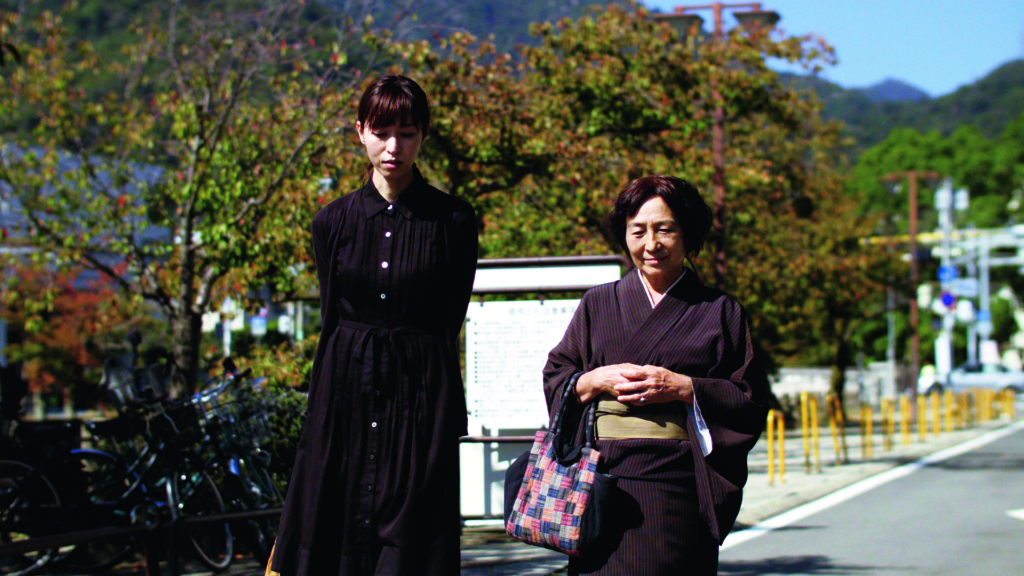
Jun decides to ‘stay on’ in Arima, though, in truth, she’s running away without telling anyone, heading on a bus out of town (where she meets a woman whom she talks to across nine minutes; Hamaguchi, again, shoots each of them staring into the lens) and then a ferry into the unknown. She’s fleeing from the cold, hard husband, Kouhei (Yoshitaka Zahana), we first meet at a divorce court hearing. That scene – also totalling seven minutes – is another key moment in Happy Hour, in which we see Jun, her supportive friends watching on, effectively cross-examined: stripped of power by a legal system in which the rights of the male outweigh those of the female. ‘Communication’, in its English iteration, is used several times in court; the paternal judge wonders why, given Kouhei professes his undying love even in the face of her infidelity, Jun doesn’t ‘try “communication” rather than fighting for a divorce’. Kouhei refuses to let go – ‘Marriage binds one to follow a set of rules in society’ – no matter how much suffering he’s inflicting on his wife, no matter that she’s fled, vanished. At another gathering over drinks, he grills Jun’s friends for information on her whereabouts, revealing that he’s employed a private investigator – standard practice in Japan when dealing with adultery and divorce[6]David McNeill, ‘Watching the Detectives’, The Japan Times, 28 November 2004, <http://www.japantimes.co.jp/life/2004/11/28/to-be-sorted/watching-the-detectives/>, accessed 7 May 2017. – and discovered that Jun is actually pregnant. The friends are repulsed by Kouhei (‘I’m grossed out,’ Akari says, ‘he’s really crazy’), but they’re worried about Jun, a figure whose absence reverberates long after she’s left the film.
Beginning with that first rupture at the post-workshop drinks – during happy hour! – our group of friends slowly drift apart, drawn into their own dramas. Unlike the group sequences, these are, save for a few key conversations, depicted with an economy that gives the film an odd rhythm. Akari suffers the sting of both workplace politics and entertaining advances from various men, trying to reconcile her desire to be independent with her emotional needs (something she speaks to Hinako about, in a ten-minute conversation). Sakurako has the meatiest subplot, but it’s told with odd bluntness and brevity: her teenage son accidentally gets his girlfriend pregnant, then, much to his father’s anger, comes to them and asks for money for an abortion, rather than just secretly passing the hat around among friends at school. The fact that they’ve been told of this requires recognition: the public shame and embarrassment of Sakurako and her mother-in-law going to the house of the girl’s family and offering formal, humbling apologies on behalf of their family. And Fumi grows increasingly upset that Takuya insists on staging a public reading of Ms Nose’s new work at her art space, feigning that she doesn’t want to mix business with pleasure.
But the reading does take place, and it’s another epic sequence, bringing together most of the cast, and told largely in real time (it amounts to thirty-nine minutes). Ms Nose reads a story set at Arima Hot Springs that, transparently, is about a young girl in love with a married man, its lengthy taxonomy of bodies recalling the discussions thereof back during the workshop sequence. Ukai is supposed to host the Q&A afterwards, but, after his come-ons finally find a willing partner in Akari, he splits, feckless to the last. Stepping into the breach, bizarrely, is Kouhei, brought forward under the strange logic that, as a scientist, he has the gravity needed for public speaking. The post-reading Q&A is as awkward as public Q&As usually are: Kouhei asks few questions, instead waffling on about himself; the audience queries are absent any insight; the uncomfortable silences pile up; and the leaving crowd is exhorted to ‘please help us by completing our survey’.
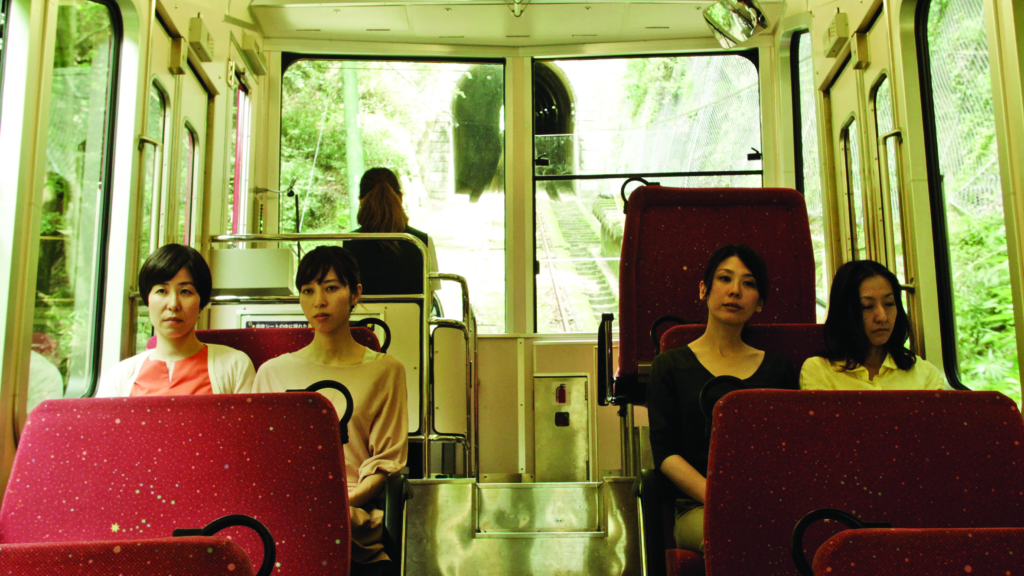
Things get even more awkward at a post-reading dinner (a sequence that, split in two, adds up to twenty minutes), where Kouhei, Ms Nose, Takuya, Fumi and Sakurako make an uneasy quintet; compared to the ribald, post-workshop debates, drunk and full of life, this feels like a wake, grim and heavy. It provides a forum for Kouhei, feeling cocky after pulling off the ad hoc Q&A, to lecture Ms Nose on love, devotion, obsession. Then he pulls out his conversational trump card: pictures of Jun with Ukai. He’s helped her find a women’s shelter in Tōhoku, which Kouhei discovered by checking her phone’s call logs via the police – something, he smugly points out, that’s his legal right as a husband. Fumi and Sakurako are horrified at his haughty self-righteousness, and, when Takuya dares ask Fumi why she’s so mad, finally there’s an explosion, and a deluge of dramatic events: Fumi runs out, walks the streets all night, comes home to request a divorce, and finds that Takuya has spent the night with Ms Nose. Sakurako, via a quirk of fate, ends up going home with Kazama, then tells her husband about it, refusing to be ashamed of what she’s done; her husband, perturbed, falls down on the sidewalk on the way to work, as if finally collapsing under the burden of stoic, workaday masculinity. Another rejected husband, Takuya, leaving home defeated, ends up running his four-wheel drive into the back of a truck; we don’t see the accident, just the aftermath, dropped in via a smash cut that suggests to us that he died by suicide. This wild tumult ends with Fumi and Akari in a hospital – and a sudden reversal, at the end, that reveals that Takuya isn’t actually dead – then sitting on a rooftop lookout, wistfully recalling all they’ve been through, dreaming of taking another trip with Jun, if she ever comes back.
This wild flurry at the end exists in such stark contrast to the initial, oh, four hours of Happy Hour that it seems almost as though Hamaguchi has lost his nerve, feeling the need to wrap up storylines that were, at first, only hinted at. But the odd rhythm of the film is clearly intentional, and keeps an audience on uncertain footing. As viewers, we’re conditioned to the tempo of films, be they popcorn blockbusters or works of stilled art-movie minimalism, but Happy Hour never keeps to those familiar beats. Befitting a work 317 minutes long, there’s lots in the text to think about: conversations that can spark thoughts, themes worn on the sleeve, and even directorial choices to consider. It’s far from a perfect film, but that’s part of the charm – it’s a work of humanism intimately attuned to its characters; its imperfection seems particularly human.
https://clickv.ie/w/metro/happy-hour
Endnotes
| 1 | Ryūsuke Hamaguchi, in Miyuki Watanabe, ‘Happy Hour: Dir. Ryūsuke Hamaguchi’, SBS, 4 August 2016, <http://www.sbs.com.au/yourlanguage/japanese/en/content/happy-hour-dir-ryusuke-hamaguchi>, accessed 21 February 2017. |
|---|---|
| 2 | See, for example, Carson Lund, ‘Happy Hour’, Slant, 12 March 2016, <http://www.slantmagazine.com/film/review/happy-hour-2015>; Michael Sicinski, ‘Happy Hour (Hamaguchi Ryusuke, Japan)’, Cinema Scope, issue 65, Winter 2015, <http://cinema-scope.com/spotlight/happy-hour-hamaguchi-ryusuke-japan/>; Lawrence Garcia, ‘In Praise of Duration’, MUBI, 14 November 2016, <https://mubi.com/notebook/posts/in-praise-of-duration>; Vadim Rizov, ‘Happy Hour, the Best 317 Minutes of New Directors/New Films 2016’, Filmmaker Magazine, 25 March 2016, <http://filmmakermagazine.com/97860-happy-hour-the-best-317-minutes-of-new-directorsnew-films-2016/>; Dan Sullivan, ‘Review: Happy Hour’, Film Comment, September/October 2016, <http://www.filmcomment.com/article/review-happy-hour-ryusuke-hamaguchi/>; and Jonathan Romney, ‘Film of the Week: Happy Hour’, Film Comment, 26 August 2016, <http://www.filmcomment.com/blog/film-week-happy-hour/>, all accessed 21 February 2017. |
| 3 | Ryūsuke Hamaguchi, quoted in Taiyo Okamoto, ‘In Search of the Centroid’, Cool, 1 May 2016, <http://www.cool-ny.com/en/archives/2361>, accessed 21 February 2017. |
| 4 | ‘Four Japanese Win Best Actress Award at Locarno Film Festival’, The Japan Times, 16 August 2015, <http://www.japantimes.co.jp/culture/2015/08/16/entertainment-news/four-japanese-win-best-actress-award-locarno-film-festival/>, accessed 21 February 2017. |
| 5 | NEOPA Inc., Happy Hour press kit, 2015, p. 7. |
| 6 | David McNeill, ‘Watching the Detectives’, The Japan Times, 28 November 2004, <http://www.japantimes.co.jp/life/2004/11/28/to-be-sorted/watching-the-detectives/>, accessed 7 May 2017. |
